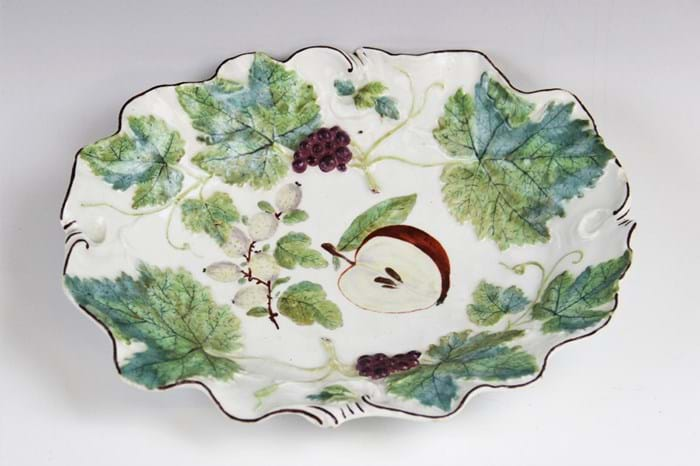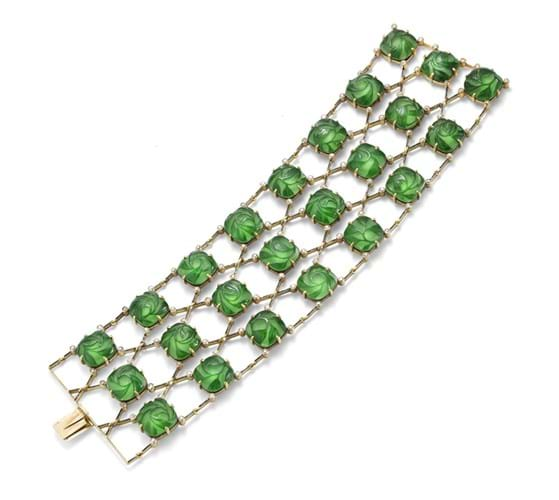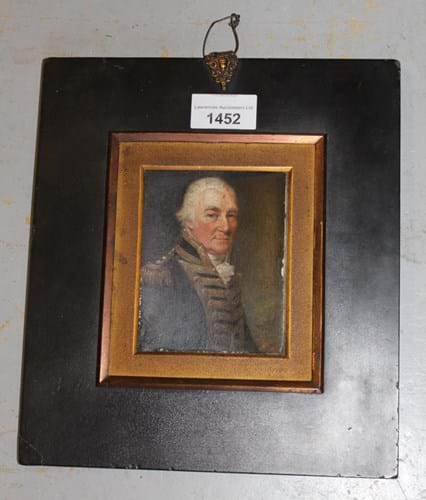
1. ‘Hans Sloane’ Chelsea dish – £7000
This Chelsea dish moulded as a vine leaf and painted with polychrome fruit is a textbook production from the Red Anchor period c.1755-58.
Subjects such as this are sometimes referred to as ‘Hans Sloane’ Chelsea – a reference to an advertisement that appeared in Faulkner's Dublin Journal of July 1-4, 1758, announcing ‘... table plates, soup plates and desart [sic] plates enamelled from Sir Hans Sloan's plants’ – apparently one of the first identifiable references to the Chelsea factory's popular botanical wares.
Sir Hans Sloane (1660-1753), Physician to Queen Anne, was a great botanist and collector of rare plants at 1712 the Chelsea Physic Garden. Most botanical renderings on these Chelsea pieces were taken from illustrations in Philip Miller's Gardener's Dictionary and Figures of Plants depicting specimens from the Physic Garden.
‘Hans Sloane’ Chelsea plates appear on the market with some frequency but dishes such as this are a rarer find. Estimated to bring £80-120 at Trevanion & Dean in Whitchurch, Shropshire on October 24, it sold via thesaleroom.com at £7000. The price replaced its overall good condition, save a small rim chip.
2. ‘Divine fungus’ porcelain with Qianlong mark – £16,000
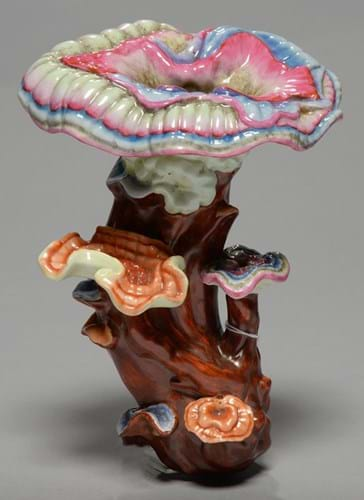
Chinese famille rose porcelain model of a lingzhi stem with Qianlong mark – £16,000 at Mellors & Kirk.
This unusual Chinese porcelain model forms the shape of a lingzhi stem vividly enamelled with a blend of green, blue and pink glazes. It measured 9in (23cm) high and carries a Qianlong (1736-1795) mark.
At Mellors & Kirk in Nottingham on October 21, it proved something of a surprise when it sold at £16,000 against a £200-250 estimate.
Lingzhi or ‘divine fungus’ is amongst the most revered plants in China and a popular motif in Chinese art for two millennia. Daoist alchemists claimed that by taking lingzhi man could attain immortality and the dead could come to life again.
However, naturalistic porcelain models are extremely rare. Court records document that the Qianlong emperor commissioned porcelain lingzhi in 1744 with Tang Ying, supervisor of the imperial kilns at Jingdezhen, fulfilling the order the following year after struggling to achieve a successful firing.
When an outwardly similar ‘mark and period’ famille rose model of the same size was sold by Sotheby’s in Hong Kong in 2015 for something in the region of HK$11m (£1.1m), it was thought to be unique. It was described as a wall vase and came with a carved wood stand.
It awaits to be seen if the latest discovery is deemed a later homage or a rare 18th century survivor.
3. Lalique 'collier de chien’ suite – £21,000
A Lalique glass, enamel and diamond bracelet, brooch and earring suite was offered at Lyon & Turnbull on October 22. It was on the market for the first time since it was bought by the Edwardian heiress Mrs Florence Evelyn St George (1870- 1936).
The daughter of one of the richest men in America, banker George Fisher Baker, she became one of the most celebrated and talked about socialites of her time, not least for a passionate and very public affair with the artist William Orpen.
Florence Evelyn St George bought her 'collier de chien’ during one of her annual shopping trips to Paris c.1910.
Lalique created a few other chokers in this trelliswork pattern between 1900-10 employing varying materials and motifs. This particular suite, made in the moulded glass that would become Lalique’s trademark, was later converted to a bracelet, earrings and a brooch.
The winning bid was £21,000 (estimate £10,000-15,000).
4. Portrait miniature of New South Wales governor – £19,000
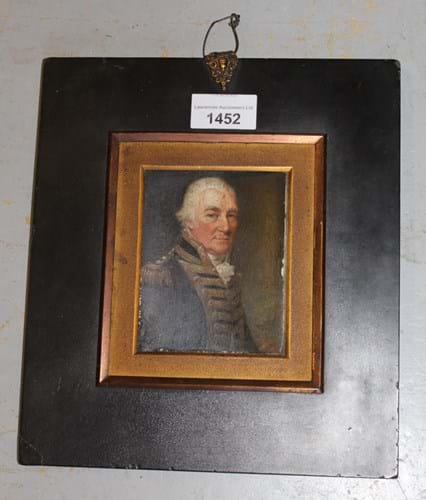
Miniature of Vice Admiral John Hunter (1737-1821), second governor of New South Wales – £19,000 at Lawrences of Bletchingley.
This 4 x 3in (10 x 8cm) oil on ivory, offered by Lawrences of Bletchingley on October 20, is attributed to the English miniature painter William Mineard Bennett (1778-1858).
However, far more important to its commercial value is the probability that the sitter was a key figure in the early history of colonial Australia.
The extensive inscriptions to the reverse of the ebonised and gilt metal frame state that the miniature was painted in 1819 and depicts Vice Admiral John Hunter (1737-1821), an officer of the Royal Navy who served as second governor of New South Wales from 1795 to 1800. Other inscriptions describe its family descent.
Both a career sailor and a scholar, Hunter was a veteran of the Seven Years' War and the American Revolutionary War before leading a First Fleet expedition up the Parramatta River in 1788. He was the first to surmise that Tasmania might be an island and gave his name to the Hunter River.
His five years as governor, when he tried to combat serious abuses by the military, were hugely difficult. Of his sojourn in the colony Hunter said that he “could not have had less comfort, although he would certainly have had greater peace of mind, had he spent the time in a penitentiary”. He returned to his native Leith later in life.
A similar small oil on panel of the same subject by Bennett dated c.1812, complete with a South Pacific sunset in the background, is in the collection of the National Library of Australia.
This version in Surrey, estimated at £2000-3000, sold at £19,000.
5. Thomas Cooke clock movement – £16,000
The Clocks & Watches sale at Gardiner Houlgate in Corsham, near Bath on October 23 was topped at £16,000 by this large iron two-train turret clock movement by Thomas Cooke (1807-68) of York.
In addition to a maker’s plaque reading T Cooke & Sons, York from 1860-1890 it is inscribed on the subsidiary seconds dial Erected for J. Sydney Davey, Esq, by Jas. Truscott, Tenby & Gloucester in Tenby Church Tower.
The movement, that strikes the hours, has single five-legged gravity escapement with both a remontoire (secondary source of power) and maintaining power achieved by an epicyclic gear system. The whole is housed in a 2ft 7in (79cm) frame.


